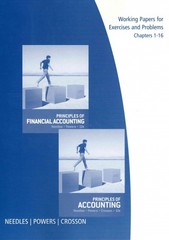By-Products; Sustainability In recent years, due to the effects of the Great Recession of 2007-2009 on the construction industry, a decline in demand for paper products, and increased demand for reduced carbon emissions to minimize global warming effects, significant changes have taken place in the harvesting and processing of wood products. The demand for lumber for construction has decreased, and the demand for alternative fuels has increased. The result is that the timber industry in the southeastern states and some western states has begun to emphasize the production of a timber by-product, wood pellets. The wood pellets are made from the waste of the sawmill process; that is, the treetops and the knotty or crooked limbs are processed into finger-sized pellets. These wood pellets are increasingly being used to replace coal in power generation plants. This is particularly true in some European countries that have taken stronger steps to produce green energy. The pellets are considered a sustainable source of energy because the trees that produce the pellets are replaced by other trees, and the growth of trees removes carbon emissions from the atmosphere; some environmentalists would argue, therefore, that the use of pellets is carbon-neutral, certainly more so than the use of coal. Coal is one-third the cost of wood pellets, but strict emission requirements in the European Union (EU) are causing power plants in the EU to shif to wood pellets. Required 1. Should wood pellets be accounted for as a by-product or a main product for the timber industry? Explain briefly 2. Assess the sustainability issue for the production of wood pellets. What are the advantages and disadvantages the use of wood pellets in power generation as a replacement for coal? 3. Most of the current demand for wood pellets is from EU countries. Would your answers to requirements ] and 2 differ if the wood pellets were used domestically instead of shipped to the EU for use there? 7-24 Cost Allocation and Taxation at Nonprofit Organizations Nonprofit organizations are exempt from federal income tax except for income from any activities that are unrelated to the nonprofit's charitable purpose. An example is the use of a laboratory for both tax-exempt basic medical research and for testing a taxable product for commercial pharmaceutical firms. A concern in these cases is that tax-exempt nonprofit organizations will be able to compete unfairly with for-profit firms because of their tax-exempt status. The key argument is that common costs for the nonprofit's exempt and business activities will be used to "subsidize" the for-profit business (in this case, the taxable product testing) Required How would cost allocation play a role in affecting the operating results of a nonprofit organization which has both business and charitable activities







